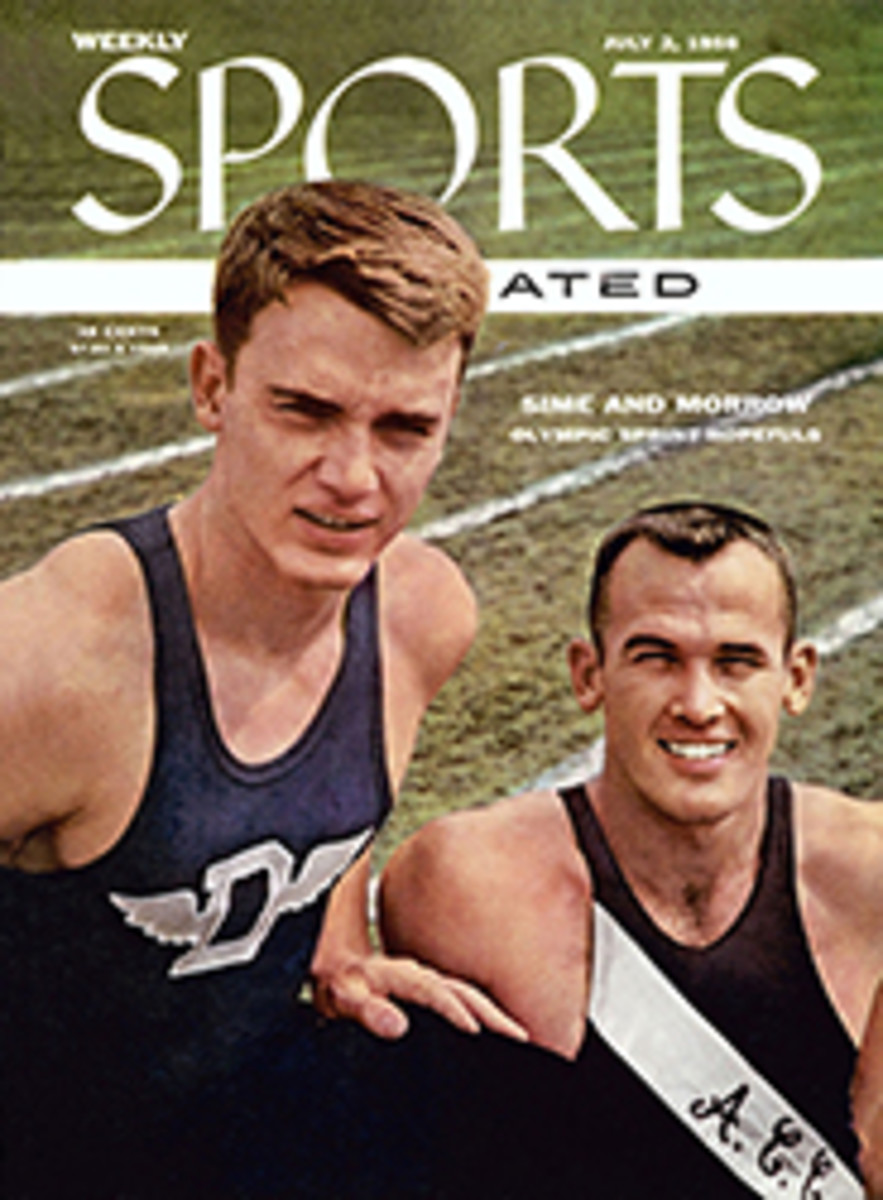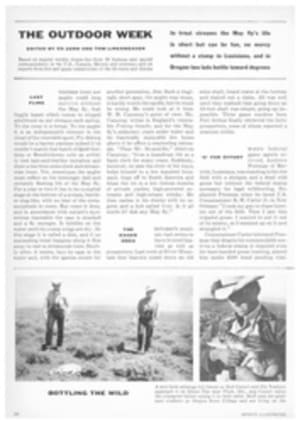
THE SIME AFFAIR
A muscle pulled two weeks ago could prevent Dave Sime, one of the most sensational dashmen of our era, from ever getting to compete in the Olympics in November.
How can that be?
The first answer is that in the U.S. Olympic qualifying races, as well as at the Olympics, the 200 meters is run on a curve—and all year Dave Sime had been running on the straightaway. He is a big man with a long stride, and a new set of muscles—including the injured adductor (see drawing)—is required to help carry a sprinter at great speed around a curve, muscles which get little work on normal straightaway races. The reason Dave had not been working on running the curve all year? Simple, says Duke's assistant track coach, Red Lewis: "He did work on the curve some during the year, but not under competitive conditions. There was no 220 around a turn scheduled in meets, and we simply couldn't find anyone fast enough to make him really run the curve hard in practice."
These are explanations which will not entirely satisfy track and field fans who naturally expected that everything would be done to train Sime for the Olympic Trials and the Olympics themselves.
It may also be true that all was not well with Sime before the race. Before the meet Coach Lewis told a few intimates, "At Sanger, the night he ran the 20 flat and the 9.3 100, Dave felt a little twinge up there in that muscle. But the doctor told us that it wouldn't hurt him in the 100, on a straightaway, and that there would be no point in sparing him the 200 at Berkeley, for the muscle would only have to meet the same test a week later at Bakersfield, so we let him run and hoped for the best—instead got the worst. Now we're concentrating on getting him ready for Los Angeles."
The dejected young sprinter said: "It was just one of those things, and nobody is to blame. But why did it have to happen now?"
As for the controversy about Sime's automatic elimination through injury, the U.S. has a rule that all members of the Olympic track and field team must win their places in direct competition in the final U.S. Olympic Trials—the moment of truth for which they qualify in the various preliminary meets—and this means that a stomachache at the wrong time can be a major tragedy. But it is a rule which has been in effect so long that it is no longer even questioned by insiders in the sport, who feel it may be hard on some but is eminently fair to most. It has applied to other fine athletes in the past. When Harrison Dillard, the world's greatest hurdler, hit three hurdles and failed to qualify in 1948, he was finished in that event for the year. The fact that Dillard had already qualified in the 100 concerns only the versatile miracle which is Harrison Dillard and has nothing to do with the rule. It remained in effect. As Red Lewis puts it, "It is the rule, and we must abide by it."
Although this is accepted by the men who compete and coach and control the sport, there are those on the outside who still wonder why this nation should be deprived in such a manner of some of its greatest athletes. The objection seems particularly weighty in a year like this, when there is ample time between the qualifying trials and the Olympics for any routine injury to heal. "It would appear," said one thoughtful gentleman last week, "that a committee of sufficient knowledge and integrity—and I know one could be found—could weigh all considerations and then, if a boy were so outstanding that it was in the entire country's interest to see that he competed, place him on the team, win, lose or draw. And I don't see why they don't do it."
At an emergency session a few days ago, the U.S. Olympic Committee decided to go some way to meet these sensible objections. Two unprecedented exceptions to the sacred rule are to be made: Dave Sime will be given another chance this weekend to qualify for the Olympic 200-meter squad. And Javelin Thrower Bud Held, who is recovering from an operation on his left ankle and just failed to qualify for the trials at Bakersfield last week, will also be allowed to compete at Los Angeles. But one aspect of the rule is unchanged: if either Sime or Held is unable to gain his place this weekend, he loses all hope of a November trip to Australia.
ILLUSTRATION
PAUL PECK
8
1
9
ILLUSTRATION
PAUL PECK
1
ILLUSTRATION
PAUL PECK
1
2
3
4
5
6
7
THE INJURY—A MEDICAL EXPERTISE
1. ADDUCTOR LONGUS
2. ADDUCTOR BREVIS
3. ADDUCTOR MAGNUS
4. SARTORIUS
5. VASTUS MEDIALIS
6. RECTUS FEMORIS
7. VASTUS LATERALIS
8. PUBIC BONE
9. FEMUR
Dave Sime pulled or frayed a tendon of the adductor longus muscle (1). The "pulled" area was limited to about three inches from the point of attachment high on the left leg. The adductor longus, one of three adductor muscles in the thigh, attaches the thighbone to the pelvis. It adducts and flexes the thigh, rotating it inwardly toward the other thigh. The running action coupled with the effort of turning on the curve of the track put too great a strain on this pivotal muscle, which had not been hardened sufficiently by practice.

